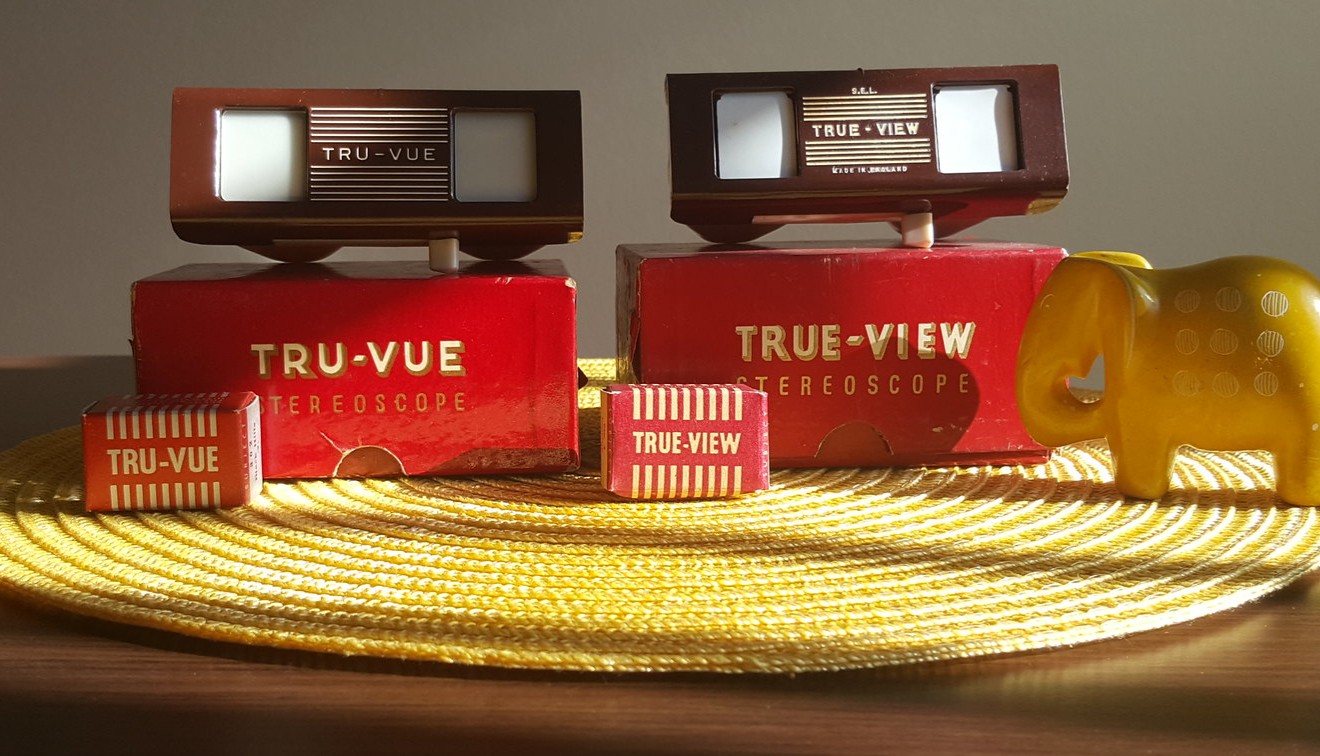
Many sound specific reels were designed over the life of the Talking View-Master – “Scenic titles like the Grand Canyon, New York City and Disneyland Cartoon titles such as, ‘Snoopy and The Red Baron’, ‘Popeye’ and ‘Casper’s Ghostland’ and educational titles like Birds of the World, Physics and The American Indian” (Sell 271). Raggedy Ann and Andy Talking View-Master Reel, GAF 1973 (Shuttlesworth 31).
TRU VUE 3 D VIEWER UPGRADE
The new electronically savvy toys of the 1970s forced GAF to turn away from their iconic toy and upgrade it. However, a key component that differentiated the Talking View-Master from the View-Master Viewers was the electronic idea – batteries were essential to the function of these new viewers. Initially the viewers were only available in a beige color, which was later changed to a USA themed red, white and blue color blend (Sell 271). In 1970, the Talking View-Master was introduced by the GAF company under the advertising slogan, “Pictures That Talk!” The new viewer with sound, although much larger than the original View-Master, functioned in the same way – top reel insertion and the same high-quality lenses. Thus, in 1970 GAF developed the Talking View-Master (Walsh 60-61). Later, in the 1970s, View-Master sales declined because the View-Master was unable to keep up with the newly developing toys of the time, specifically with electronic capabilities. The kid’s reels included fun Disney characters, like the Mouseketeers, but also educational reels, like the 1969 moon landing (Walsh 60).Īfter Gruber’s untimely death in 1965, Harold Graves sold the company to the General Aniline and Film Corporation (GAF), a larger corporation with a bigger advertising budget.

In 1951, with Sawyer’s Photographic Services purchasing their largest competitor, The Tru-Vue Company, they received the rights to all of the Disney characters, thus initiating the concept of the View-Master as a kid’s toy. However, as the demand increased, many other photographers were hired to assist in obtaining the three-dimensional images. In the beginning, Gruber photographed all the images, predominately nature scenes, himself. Gruber brought this home entertainment gadget, initially marketed for adults, to the masses. It had its initial debut at New York’s 1939 World Fair (Walsh 57-58).
TRU VUE 3 D VIEWER MOVIE
The idea struck the German immigrant while recuperating from surgery in an Oregon hospital where “e conceived of a way to use movie film to make stereo pictures and group them for viewing in a very efficient and inexpensive manner.” To make his vision happen, Gruber partnered with Harold Graves, president of Sawyer’s Photographic Services, who invested $50,000 in the idea. In 1938 William Gruber, a piano tuner and camera buff, invented a three-dimensional viewer known as the View-Master.

William Gruber, inventor of the View-Master (Walsh 57).


 0 kommentar(er)
0 kommentar(er)
